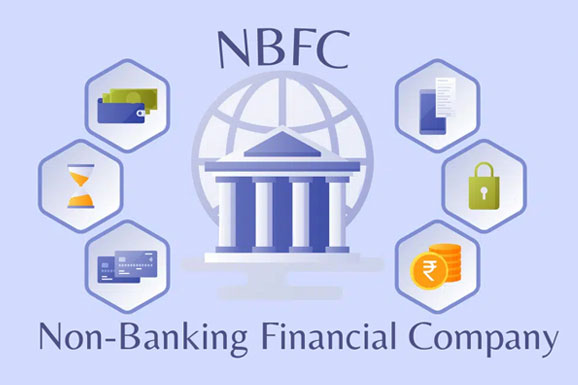
NBFC Registration your trusted growth partner for Non-Banking financial companies (NBFCs).

NBFC Registration your trusted growth partner for Non-Banking financial companies (NBFCs).
Our NBFC Consultant team offers over 20+ years of expertise, featuring a dedicated team of former bankers and experienced CA and CS professionals. We deliver strategic, expert-driven solutions to support your business’s growth and success
Entities registered under the Companies Act, 1956 / 2013, are eligible to apply to the RBI for an NBFC license in accordance with section 45-I (c) of the RBI Act 1934. NBFCs are essential to the way that financial functions are carried out in our economy.
Furthermore, the RBI regulates NBFC operations in accordance with the guidelines set forth in the RBI Act, 1934. No NBFC may begin or carry out commercial operations without first obtaining an NBFC Registration Certificate, according to Section 45-IA. In addition, the RBI has simplified the rules pertaining


Type I: NBFC-ND not accepting public funds / not intending to accept public funds in the future and not having customer interface/ not intending to have customer interface in the future.
Type II: NBFC-ND accepting public funds/ intending to accept public funds in the future and/or having customer interface / intending to have customer interface in the future. NBFC-MFI, NBFC-factor, NBFC-IDF etc. are categorized as Type II.
The regulatory structure for Non-Banking Financial Companies (NBFCs) shall comprise four layers based on their size, activity, and perceived riskiness. NBFCs in the lowest layer shall be known as NBFCs-Base Layer (NBFCs-BL). NBFCs in the middle and upper layers shall be known as NBFCs-Middle Layer (NBFCs-ML) and NBFC, Upper Layer (NBFCs-UL), respectively. The Top Layer is ideally expected to be empty and will be known as NBFCs-Top Layer (NBFCs-TL).
The top layer to be populated only if RBI is of the opinion that there is a substantial increase in the potential systemic risk from specific NBFCs in the upper layer. There will be enhanced and intensive supervisory engagement with these NBFCs.
NBFCs would be specifically identified by RBI through parametric analysis of certain quantitative and qualitative criteria. The top 10 eligible NBFCs in terms of their asset size shall always reside in the upper layer, irrespective of any other factor.
All deposit taking NBFCs (NBFC-Ds), Non-deposit taking NBFCs with asset size of s. 1000 crore or more, Standalone Primary Dealers (SPDs), Infrastructure Debt Fund – NBFCs (IDF-NBFCs), Core Investment Companies (CICs), Housing Finance Companies (HFCs), Infrastructure Finance Companies (NBFC- IFCs) and certain government owned NBFCs.
Non-deposit taking NBFCs with asset size of less than s. 1000 crore, NBFC- Peer to Peer Lending Platform (NBFC-P2P), NBFC- Account Aggregator (NBFC-AA), Non-Operative Financial Holding Company (NOFHC), NBFCs not availing public funds and not having any customer interface and certain government owned NBFCs.
As the regulatory structure envisages scale based as well as activity-based regulation, the following prescriptions shall apply in respect of the NBFCs.
Credibility and Trust: NBFC registration enhances credibility and instills trust among customers, investors, and stakeholders. It demonstrates compliance with regulatory standards and adherence to ethical business practices, thereby enhancing the reputation of the company.
Registered NBFCs have access to diverse funding sources, including bank loans, capital markets, and deposits from the public. This access to funding facilitates business growth, expansion, and diversification of financial products and services.
NBFC registration subjects the company to regulatory oversight by the relevant authorities, such as the RBI. Regulatory supervision ensures compliance with prudential norms, risk management standards, and consumer protection regulations, thereby promoting financial stability and safeguarding the interests of stakeholders.
Registered NBFCs can capitalize on market opportunities by offering a wide range of financial products and services, including loans, investments, leasing, and hire purchase. This enables NBFCs to cater to diverse customer needs and capitalize on emerging trends in the financial sector.
NBFC registration provides legal recognition and validity to the company’s operations. It establishes the company as a legitimate financial institution authorized to conduct specified financial activities, thereby avoiding legal complications and enhancing business prospects.
Registration as an NBFC opens up avenues for business growth and expansion. It enables the company to enter new markets, diversify its product offerings, and attract a broader customer base, leading to increased profitability and market share.
NBFC registration enhances consumer confidence by providing assurance regarding the company’s financial stability, compliance with regulatory standards, and commitment to fair and transparent practices. This fosters long-term relationships with customers and promotes customer loyalty.
Registered NBFCs enjoy a competitive advantage over unregistered entities due to their credibility, regulatory oversight, access to funding, and ability to offer a wider range of financial products and services. This enables NBFCs to differentiate themselves in the market and maintain a competitive edge.
The eligibility criteria for NBFC registration vary depending on the jurisdiction and regulatory authority governing non-banking financial companies. In India, the Reserve Bank of India (RBI) regulates and oversees the registration and operations of NBFCs. The eligibility criteria for NBFC registration in India typically include the following:
The applicant company must be registered under the Companies Act, 1956 or 2013, as a public company or private limited company. The company’s Memorandum of Association (MoA) must include the objective of carrying on the business of non-banking financial activities
The applicant company must have a minimum net owned funds (NOF) as prescribed by the RBI. The NOF requirement may vary depending on the type of NBFC and its proposed activities.
The management of the applicant company must be fit and proper, with individuals possessing relevant qualifications, experience, and integrity to run a financial institution. The RBI may scrutinize the background and track record of the directors and key management personnel.
The applicant company must submit a detailed business plan outlining its proposed activities, target market, financial projections, risk management framework, and compliance mechanisms.
The applicant company must agree to comply with prudential norms prescribed by the RBI, including capital adequacy requirements, asset classification, provisioning norms, and liquidity management standards.
The applicant company must undertake to comply with all applicable laws, regulations, and guidelines issued by the RBI, including Anti-Money Laundering (AML) and Know Your Customer (KYC) norms.
If the applicant company proposes to undertake financial activities in collaboration with a foreign entity or as a joint venture, it may require a No Objection Certificate (NOC) from the relevant authorities, such as the Ministry of Finance or Foreign Investment Promotion Board (FIPB).
The applicant company must submit a formal application for NBFC registration to the RBI, along with all necessary documents and fees as prescribed by the regulator.
The specific documents required for NBFC registration may vary depending on the jurisdiction and regulatory authority governing non-banking financial companies. However, in India, where the Reserve Bank of India (RBI) regulates and oversees NBFCs, the following are typically the documents required for NBFC registration:







